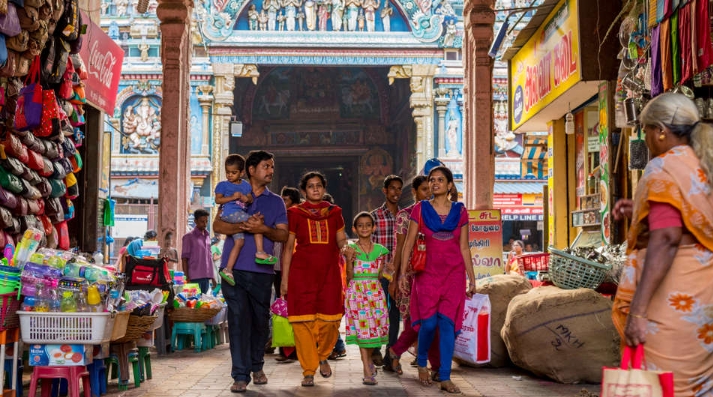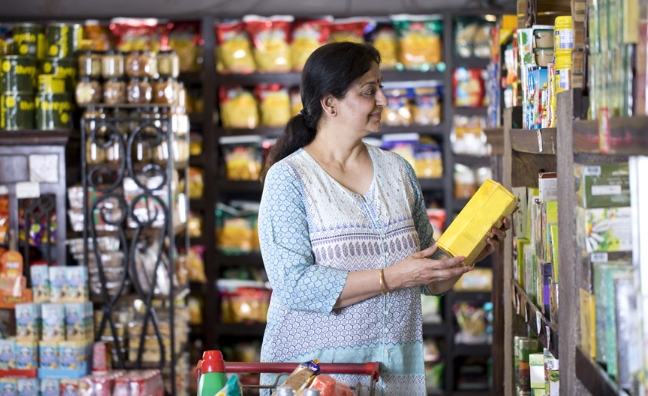Previous estimates have indicated that India’s middle-class population was below 100 million, but more recent evaluations suggest that the number stands at approximately 432 million.
As per the United Nations, India has officially become the world’s most populous nation, surpassing China for the first time this year. However, the question remains: How substantial is the market potential in India?
Since the initiation of economic liberalization in India over three decades ago, companies, both domestic and international, have been grappling with the question of determining the number of Indians who earn sufficient income to be classified as middle class.
Although estimates vary, all of them represent a small proportion of the United Nations’ reported figure of over 1.425 billion people residing in India. Previous estimates have indicated that the number of middle-class individuals is significantly lower than 100 million, implying that India’s consumer class is more comparable in size to that of a midsize economy in Southeast Asia or Europe, rather than China’s.
A significant number of Indians earn incomes below the threshold for income tax payments, operate within the informal economy, or are exempt from taxes due to working in the agricultural sector. In the fiscal year 2021-22, only approximately 58 million individual tax returns were filed. The relatively modest average income levels in the country have given rise to unique phenomena such as “microinsurance,” which offers policies with extremely low premiums, as well as the emergence of the “sachet economy,” characterized by single-portion packets of products like cookies and shampoo.
The identification and preferences of India’s middle class have long been a recurring concern for companies operating in consumer goods, retail, and various other sectors. Understanding their needs is essential for devising effective strategies to promote the sales of products such as toothpaste, streaming content, or mobile phones. Moreover, as consumption contributes to approximately 60 percent of the country’s gross domestic product, this metric holds significance for anyone monitoring India’s overall growth trajectory.
“The middle classes act as employers and employees, consumers and producers, and agents of political change,” says Rajesh Shukla, chief executive of People Research on India’s Consumer Economy (Price), a not-for-profit research firm based in Udaipur that conducts household income surveys. He further emphasizes their role in generating new jobs for the expanding workforce and contributing to nearly half of all taxes paid.

Obtaining reliable data on this matter has been challenging in India’s history. The National Council of Applied Economic Research conducted income surveys in the country until 2004-05, while more recently, People Research on India’s Consumer Economy (Price) carried out three surveys of its own to address this gap.
According to the research conducted by Shukla’s group, they estimate that there are approximately 432 million middle-class individuals in India, accounting for roughly one in every three people. The definition of the middle class varies significantly within Price’s assessment, encompassing households with an annual income ranging from 500,000 to 3,000,000 rupees (approximately $6,700 to $40,000). Shukla asserts that this income level provides economic security and enables individuals to engage in discretionary consumption.
Market researchers in India explain that they adopt a broad definition of the middle class to align with the lowest and highest tax brackets applicable to tax-filing individuals. Tax returns provide a measurable and quantifiable dataset for analysis. They also note that the implementation of India’s goods and services tax and the increasing digitalization of the economy are contributing to the inclusion of more individuals within the formal economy. This development not only benefits the overall economy but also provides researchers with more robust and concrete data for studying the Indian consumer market.
Shiv Shivakumar, operating partner at private equity firm Advent International, utilizes a methodology to estimate the size of the middle class based on the number of income tax returns and an assumed average household size of 4.4 individuals. To this estimate, he includes an additional 100 million to 200 million individuals engaged in agriculture (representing the top income segment among the nearly 1 billion Indians involved in agricultural activities). Through this approach, Shivakumar arrives at an estimated range of 356 million to 456 million people for the Indian middle class.
Shivakumar adopts the same household income range of 500,000 to 3,000,000 rupees per year to define the middle class, aligning with the definition used by Shukla from Price. Shivakumar acknowledges that if one views India as a multinational entity, it may be disheartening due to its population of 1.4 billion people, leading to questions about business size. However, he emphasizes that significant progress has already been made and anticipates further advancements. Market researchers also pay attention to a distinct group known as “aspirers” who fall just below the 500,000 rupee income threshold and have the potential to transition into the middle class in the near future.
Nikhil Ojha, a senior partner at Bain & Co, warns against underestimating the magnitude and significance of the evolving consumption patterns in India. He emphasizes that the most notable transformation will occur as the “aspirers” transition into the middle class, indicating a shift in their purchasing behavior towards not only increased consumption but also a preference for premium and emerging product categories. This upward mobility within the middle class will contribute to a substantial change in the Indian economy.





